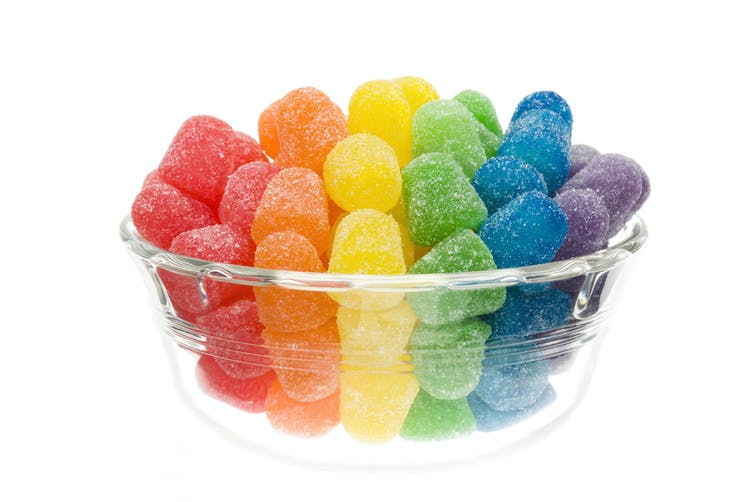Early-onset colorectal cancer incidence among the young, defined as those under age 50, has been rising globally since the early 1990s. Rates for colon and rectal cancers are expected to increase by 90% and 124%, respectively, by 2030.
One suspected reason behind this trend is increased global consumption of a Westernized diet that consists heavily of red and processed meats, added sugar and refined grains. Sixty percent of the Standard American Diet, also known as “SAD,” is made up of ultra-processed food such as industrial baked sweets, soft drinks and processed meat. SAD is associated with an increased risk of colorectal cancer.
One aspect of ultra-processed foods I’m concerned about is how colorful they are. This characteristic is on full display in many delicious foods and treats present during the year-end holidays. However, many of the colors that make up candy canes, sugar cookies and even cranberry sauce and roast ham, are synthetic. And there’s some evidence that these artificial food dyes may trigger cancer-causing processes in the body.

While artificial food coloring may look pretty, potential health risks require further study.
cmannphoto/E+ via Getty Images
As the director of the Center for Colon Cancer Research at the University of South Carolina, I have been studying the effects of these synthetic food dyes on colorectal cancer development. While research on the potential cancer risk of synthetic food dyes is only just starting, I believe that you may want to think twice before you reach for that colorful treat this holiday season.
What are synthetic food dyes?
The food industry uses synthetic dyes because they make food look better. The first food dyes were created from coal tar in the late 1800s. Today, they are often synthesized from a chemical derived from petroleum called naphthalene to make a final product called an azo dye.
Food manufacturers prefer synthetic dyes over natural dyes like beet extract because they are cheaper, brighter and last longer. While manufacturers have developed hundreds of synthetic food dyes over the past century, the majority of them are toxic. Only nine are approved for use in food under U.S. Food and Drug Administration policy, and even fewer pass European Union regulations.
Food manufacturers in the U.S. started using synthetic dyes to standardize the coloring of their products as a marketing strategy.
What drives colorectal cancer?
DNA damage is the primary driver of colorectal cancer. When DNA damage occurs on cancer driver genes, it can result in a mutation that tells the cell to divide uncontrollably and turn cancerous.
Another driver of colorectal cancer is inflammation. Inflammation occurs when the immune system sends out inflammatory cells to begin healing an injury or capture disease-causing pathogens. When this inflammation persists over time, it can…



